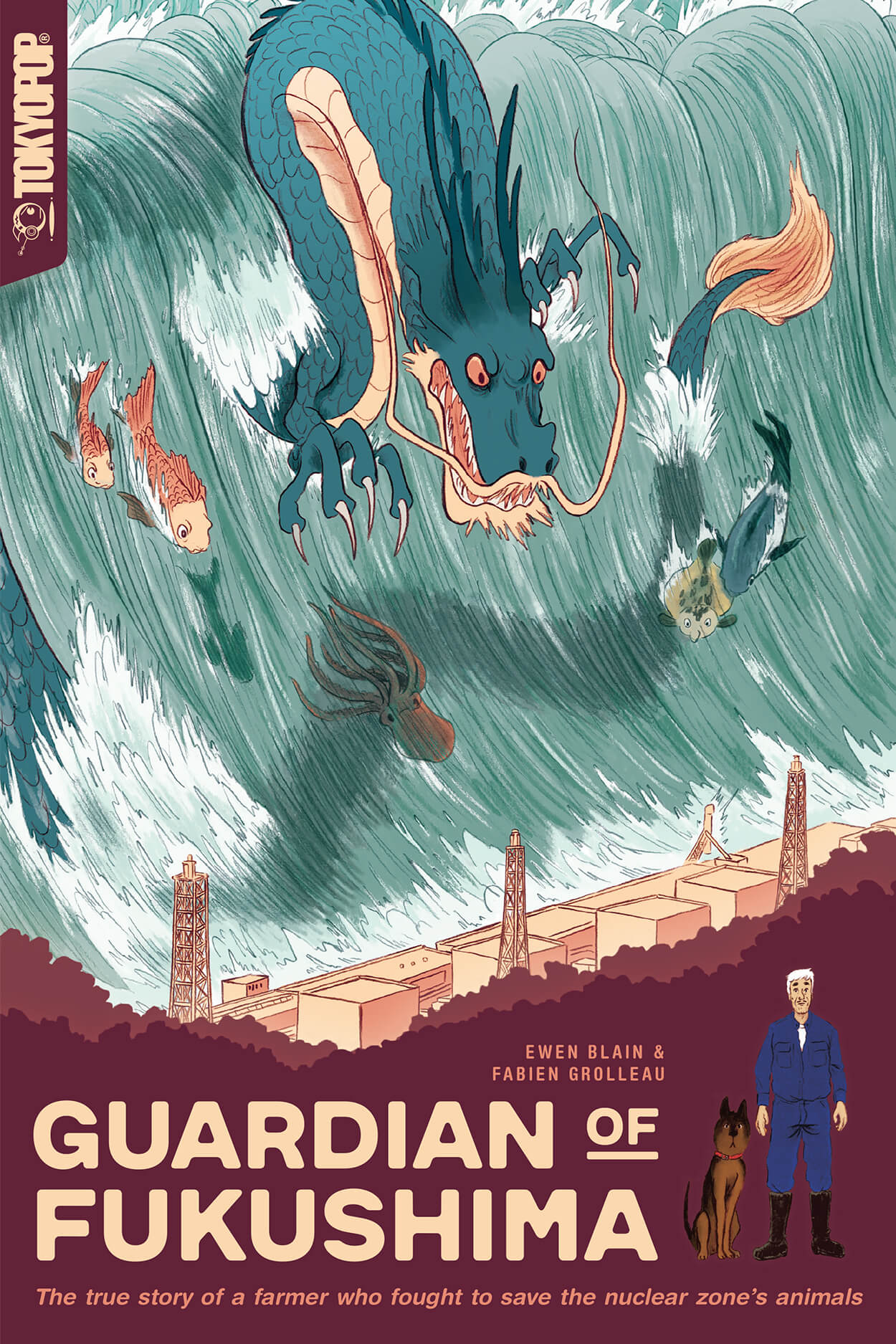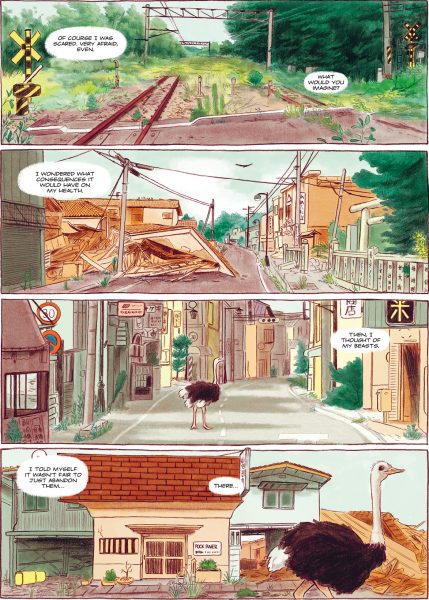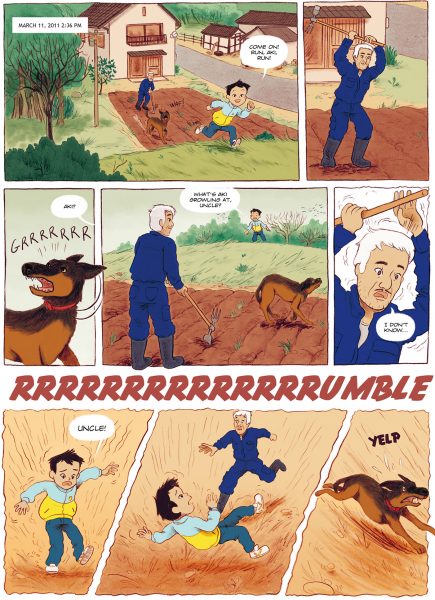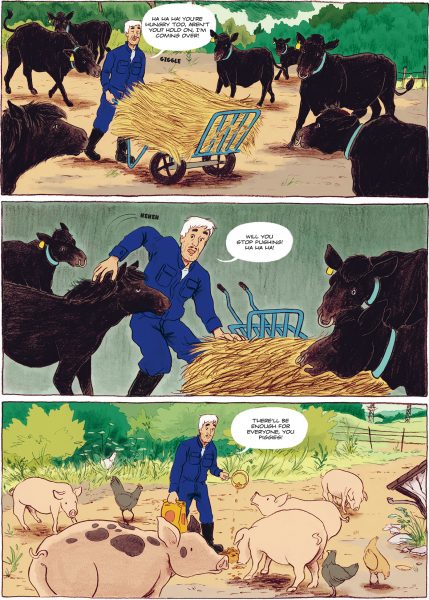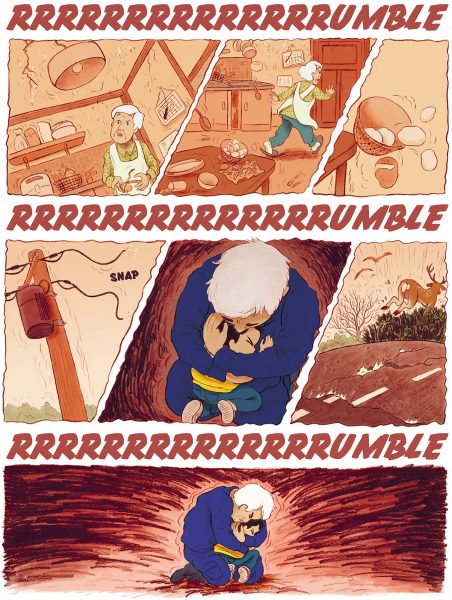COMIC REVIEW | "Guardian of Fukushima" Finds Hope in Modern-Day Crisis
Twelve years have gone by since Fukushima experienced one of the biggest earthquakes on record. A magnitude of 9.0, the prefecture took on one massive aftershock after another. And then, a tsunami that towered at 130 feet crashed in, wiping out life, buildings, and memories in an instant. Just when the worst seemed over, three nuclear reactors in the city exploded, with its radiation pouring all over the land, sea, and air of the vicinity.
Over 20,000 dead, 6,000+ injured, and — to this day — 40,000 still living in temporary housing. Roland Kelts says it best in his introduction to Ewen Blain & Fabien Grolleau’s Guardian of Fukushima: “The numbers are numbing.” How does one start picking up the pieces of such a tragedy, let alone come to terms to what’s going on? If you are Naoto Matsumura, you start by helping the helpless.
Combining the truth with famous Japanese folklore, Guardian of Fukushima tells Naoto’s story on how he dealt with the biggest nuclear disaster since Chernobyl. The incident began like any normal day, with him taking care of his farm, the animals, and his nephew Koichi. Then, with a loud rumble, the ground shook violently, with Naoto rushing to his nephew’s aid. But after checking on everyone, the aftershocks begin, causing Koichi to panic more.
As Koichi is young, Naoto takes the opportunity to explain to him what’s going on. Using the tales of the giant catfish Namazu and the classic Taro Urashima, the kind uncle puts these scary situations into perspective for his nephew. However, the sight of a massive wave taking out a nearby town forces Koichi and his family to realize what’s happening. And when the nuclear plant starts taking damage, it appears the writing is on the wall for Fukushima.
What happens next in Guardian of Fukushima mirrors many survivors’ experience of the incident. Naoto tries to find refuge, with only his nephew being allowed in with relatives. Everyone else has to fend for themselves, until brother Hayato arrives to take in Naoto and the rest. However, Naoto decision to stay is where his story will differ from many of the other survivors of this tragedy.
This choice is where the heart of Guardian of Fukushima begins to pump loudly. Disturbed by the lack of care for the animals — with some veterinarian services even just euthanizing creatures left and right — Naoto aims to save as many of these living beings as he can. Despite his age and health, Naoto rescues cats, dogs, pigs, cows, and even an ostrich or two from a terrible death. But even with all of his own might, Naoto realizes that he can’t do it alone.
It’s a story that pulls at the heartstrings, with one man now going against an invisible enemy. With the radiation from the plant fallout all over, Naoto fights a battle by his lonesome. Only when word spreads of his heroism do people start coming to help, as they too risk exposure from the radiation. But the cause is one too great to ignore, with the health of a few outweighing the lives of thousands.
Grolleau uses the mixture of real-life events and Japanese mythology with great results. The tale of Taro Urushima works well with the aftermath of Fukushima, with the empty streets and destroyed buildings serving as a strong comparison to when Taro visited the surface world after a year underwater. The people Naoto knew are now gone, their achievements washed up by the tsunami, and their homes reduced to rubble. Blain illustrates these moments with a mixture of sadness and beauty, with the colorful myths contrasting with the dark and grey realities.
As a whole, Guardian of Fukushima is a compelling story. It balances the importance of animal life, of human compassion, and the dangers of nuclear power. Naoto’s speech at a European Parliament conference sums up why the latter is so dangerous, on top of pushing for big change in a world that needs to open their eyes to see the truth. While it’s a long task to complete, it takes just making the first step to start the process of eliminating a dangerous power.
The final pages of Guardian of Fukushima show that there’s always something worth protecting after a major tragedy. It could be a child, a pet, or even a cherished memory. Naoto Matsumura’s story is just one of many that came out of this tragedy. However, as Guardian of Fukushima shows, his heroic deeds show what power a person can have when they persevere with hope in their hearts and change on their minds.
Check out Stu Levy's documentary "Pray For Japan" here.
FINAL GRADE:
Promotional consideration provided by TOKYOPOP and Erik Jansen of MediaLab PR. In stores February 28th!


